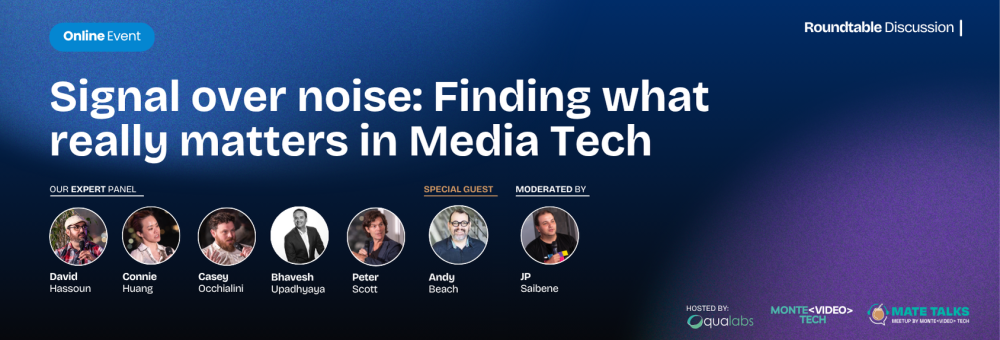The topic was clear: while the streaming stack the technology that powers modern video delivery, has matured, the revenue stack, the business models that sustain these services, lags behind. As we dive into the key insights from this conversation, one message stands out: in a world flooded with trends and shiny new tools, the real challenge is focusing on what actually drives value.
The streaming stack is solid, but the revenue stack is struggling
Andy Beach opened the session by stating:
“The streaming stack works. The revenue stack? Not yet!”
This powerful observation set the tone for the entire discussion. The group agreed that while the video broadcasting infrastructure has evolved impressively, monetization models - especially in advertising - remain fragmented and inefficient.
“Advertising fragmented just like distribution” Andy added, highlighting how the scatter of platforms, formats, and standards undermines consistent revenue streams.
This fragmentation has left companies chasing solutions that often feel like band-aids rather than real fixes.
This short-term focus chips away at trust and pushes viewers toward frustration rather than loyalty. The monetization strategies in MediaTech too often default to advertising, but there's growing recognition that a broader mix of revenue models—beyond ads—could be essential for long-term growth.
Is there common ground? We need a more cohesive approach to revenue models that aligns with the strengths of modern streaming infrastructure.
AI: The promise and the cost
“Data is fuel for AI” This sparked a conversation about AI’s growing role in MediaTech.
His insight pointed to a harsh reality: while AI offers incredible potential for personalization and efficiency, the economic model behind it isn’t yet sustainable at scale.
This sharp insight reframed AI not as a magic bullet, but as a tool whose adoption will ultimately depend on economic incentives. The conversation returned repeatedly to the notion that AI must drive real, measurable value—whether in cost savings, audience engagement, or new revenue streams—rather than being implemented for its own sake.
The panel also explored the ethical implications of AI: who controls the data, how bias might be introduced, and whether AI-driven personalization risks reinforcing existing silos rather than fostering broader discovery. While time constraints prevented a full deep dive, the conversation underscored the complex trade-offs at play: AI has the potential to transform MediaTech, but only if we approach it with clear-eyed pragmatism and a focus on long-term sustainability.
Users as products: The double-edged sword of monetization
Monetization models in MediaTech often create tension between user experience and revenue generation.
This idea led to a broader discussion on how platforms continue to layer ads into paid services, eroding trust and frustrating users.
His comment pointed directly to a problem: even paying customers are treated as part of the monetization strategy, creating a sense of diminished trust and undermining long-term loyalty. These statements underline the urgent need to rethink business models in MediaTech, ensuring that monetization strategies don’t alienate the very users they aim to serve, while also sparking reflection on the need for more balanced, user-centric business models that prioritize genuine value over aggressive monetization.
This insight reinforced the importance of experimentation and continuous learning, an idea that resonated with many in the room. Focus less on flashy innovations and more on delivering real, measurable benefits.
Bridging gaps: from fragmentation to collaboration
A key takeaway from this Mate Talk was the need for stronger collaboration across the MediaTech ecosystem. The industry is at a crossroads: continue chasing trends and risking fragmentation, or come together to build sustainable, user-centered solutions.
The conversation revealed that solving these challenges isn’t just about better tech—it’s about redefining priorities, aligning incentives, and fostering a culture of collaboration.
Let’s focus on the signal
Cut through the noise. Focus on what truly matters. Build technologies and business models that deliver real value to users, not just platforms. Invest in sustainable revenue strategies, not just short-term fixes. And most importantly, remember that innovation means nothing if it doesn’t serve the people.
As we move forward, let’s leave behind the shiny toys and start focusing on the hard work of creating meaningful impact in MediaTech.



.png)

.png)

